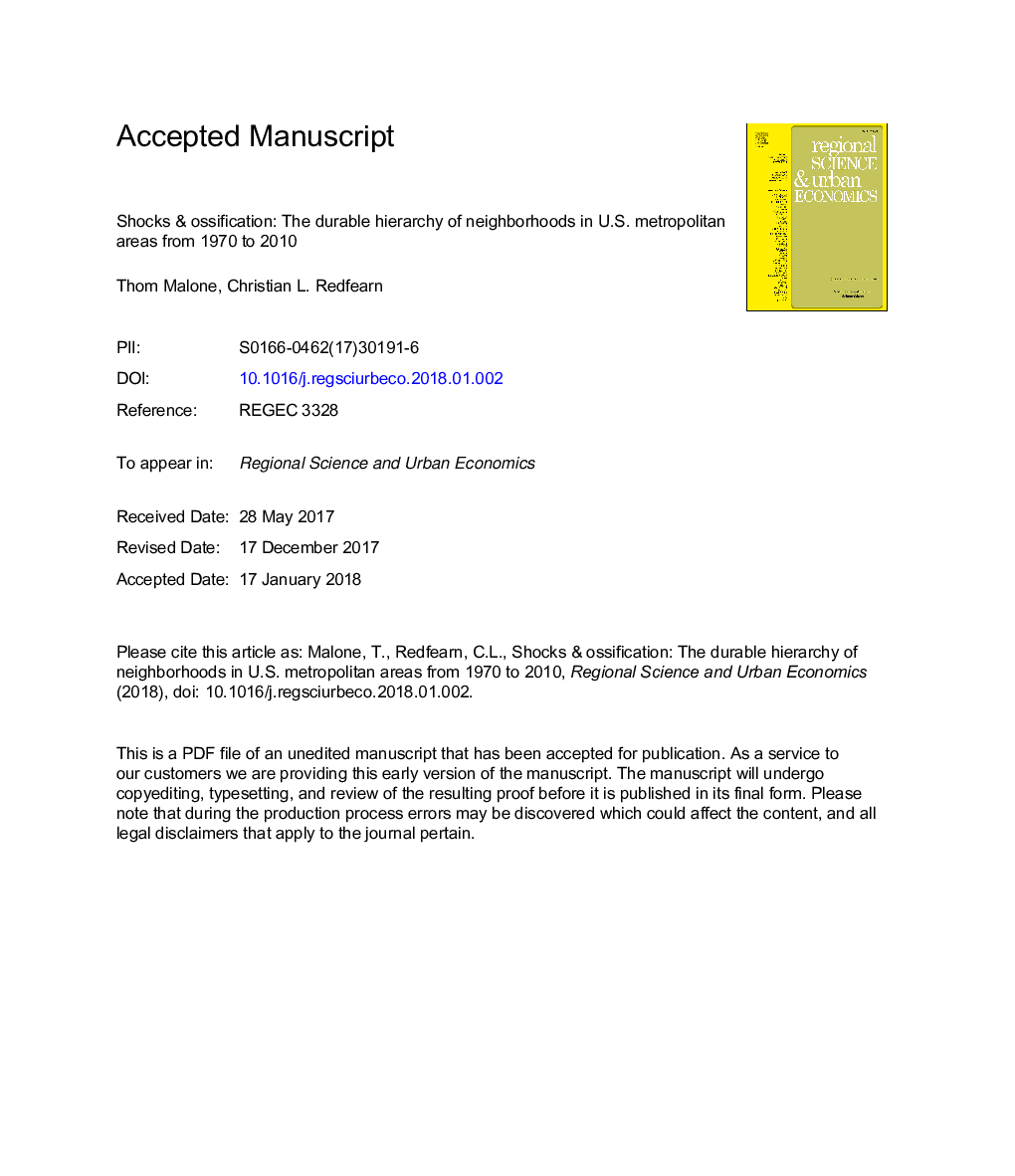| Article ID | Journal | Published Year | Pages | File Type |
|---|---|---|---|---|
| 7383675 | Regional Science and Urban Economics | 2018 | 53 Pages |
Abstract
We examine neighborhood hierarchies and ask how durable they are over time. Despite the substantial changes that have occurred in metropolitan America from 1970 to 2010, we find remarkable persistence in the rank of census tracts by population density, income, education, and house prices, with many MSAs having rank correlations of over 0.75. Racial and ethnic variables appear to be less persistent, but all the variables exhibit a significant trend toward more stability over time. Even in the presence of large shocks to the metropolitan economy, a majority of MSAs retain the same basic spatial hierarchy they had decades ago. We also find that disturbances to hierarchies are highly spatially correlated. This pattern of stability and change has significant implications for how we analyze and understand urban areas and the way they change.
Related Topics
Social Sciences and Humanities
Economics, Econometrics and Finance
Economics and Econometrics
Authors
Thom Malone, Christian L. Redfearn,
